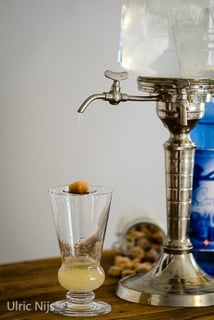Has ever a beverage inspired so much fear, admiration and misgivings than absinthe? I think not!
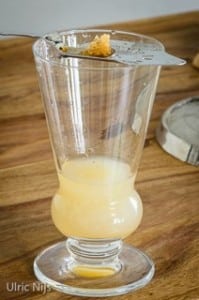
My first encounter with absinth (note the lack of ‘e’) was in the mid 90’s in one of London’s first bar dedicated to the green stuff –well, green-ish… It has to be said, I remember very little about that evening, except that they all tasted the same: harsh, highly potent and frankly un-inspiring, and this, in spite of a wide choice of brands (Hill’s and Sebor are the only two I recall) and a dramatic service ritual!
In spite of the bad taste of the said absinths, I was truly hooked on it! Probably more on the ritual than the actual drink, it has to be said. In fact, I was so engrossed in this new phenomenon that I even started a small variation of my own that I have proudly preached in all bars I have worked in. Unfortunately, little did I know that I wasn’t drinking absinthe, but rather a pale imitation of the original stuff, and that you NEVER NEVER NEVER NEVER NEVER ASBO-NEVER-LUTELY NEVER burn ANYTHING when serving the real McCoy!
So what is the deal then? It would be easy to fall into a typical discussion about what absinthe really is, its history and heritage, but it has been done, it has been written, re-written and completely written by people infinitely more knowledgeable than I. Instead, I thought it be would be more interesting to focus on the various ways to enjoy the “green fairy” and how to avoid the mistakes I did when I first started experimenting.
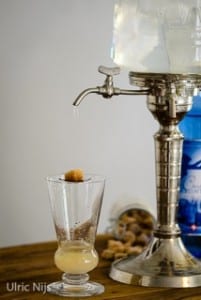
Real absinthe is a real pleasure; it is mesmerizing, hedonistic and completely moreish! Its pouring rituals are so hypnotic that ignoring these is to miss on one of the unique pleasures of absinthe! After all, an absinthe without its ritual is a bit like a coffee without caffeine; what is the point? Instead,take your time and absorb all the visual and olfactory quality cues! Watch the absinthe gradually becoming cloudy, admire how it turns and twists and transforms into a bright, pearly white drink. Smell the way its aromas are evolving, as the water is being carefully added, drop-by-drop, into the glass. It is hypnotic and enticing and –like wine- it is one of these rare drinks that truly appeal to all of our senses!
My favorite method of preparation is with a fountain, but there are many other ways: Some people will use a “brouilleur”, which is smaller and more personal version of a fountain; or simply with a small water carafe… Whatever method you favor is fine, so long as you take your time – Even the iconic bartender, Jerry Thomas, insisted on the water being poured “drop by drop” into the glass.
“Sugar or no sugar, that is the question,
Whether ‘tis nobler in the glass to make sweeter?”
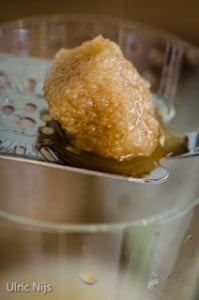
While it is true that if you look at absinthe-inspired paintings, most of them will depict a spoon and a sugar cube. However,not all absinthes should be sweetened;sugar was essentially used to mask the off-flavors of poorly produced absinthes, and it is by no means a pre-requisite for a perfect serve. Jerry Thomas insists and writes that absinthe should not be served with a spoon, therefore we can infer, without sugar. 70yrs later, the “Savoy Cocktail Book” writes about an “Absinthe Drip Cocktail”, where sugar is listed as an ingredient, perhaps pointing at the declining quality of available absinthes? Or rather highlighting a change of trend toward sweeter drinks?We will probably never know. However, I personally prefer my absinthe slightly sweeter, as I have quite a sweet tooth, but this varies very much from person to person. Do not be afraid to experiment without sugar.
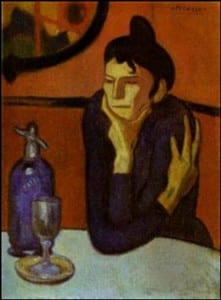
Another interesting serve was pointed out by Marie Claude Delahaye (the curator of the French absinthe museum), and is probably better illustrated by Pablo Picasso’s “Woman Drinking Absinthe”. The picture differs on one critical count: Instead of the usual fountain or water carafe on the table, one can see a blue soda syphon, hinting at absinthe being consumed with seltzer water. This can also be noticed in a couple of Jean Beraud’s paintings (“The Drinkers” or “Partie De Billard”). This style of service was certainly less widespread than the classic drip, however it is worth trying:It yields a drier yet fresher glass superbly suited to hot climate or summer afternoons. The strong, natural bitterness of the wormwood and the many botanicals used in absinthe will make this as interesting alternative to a gin & tonic. While still very enjoyable, it lacks the ritualistic and mesmerizing effects that a more “classic” preparation would have.
Are we to talk about absinthe without mentioning cocktails? Unlikely… Absinthe plays a crucial role in many classic recipes; and no-self respecting bars should be without a good quality bottle! From the classic Sazerac to the more contemporary creations such as the Flutter by Lassi (created by Jon Lister for Gymkhana in London), absinthe has the ability to liven up any cocktails with just a couple of drops or play center stage in the flavor profile! It is hardly surprising then, that the “Savoy Cocktail Book” lists over 100 different cocktails with the “green fairy” in various quantities… Considering the current cocktail culture revival, absinthe is again, essential behind the bar and is poised to become more common across the globe. Some recipes worth experimenting with are as follow:
Flutter by Lassi:
- 3 dill sprigs, plus one to serve
- 2cm cucumber, skinned (reserve the skin to serve)
- 35ml Butterfly Boston absinthe
- 10ml lime juice
- 20ml gomme syrup
- 50ml yoghurt
Muddle the dill and cucumber. Pour the other ingredients into a shaker; shake and double strain them. Serve garnished with the scrolled skin of cucumber and a sprig of dill.
Sazerac:
The Sazerac is ALWAYS recommended and there are plenty of resources on-line to discover this amazing drink. I recommend the following: http://www.jeffreymorgenthaler.com/2008/sazerac/
Forbidden Fruits
Another moreish cocktail; it highlights absinthe’s versatility in fruitier cocktails.
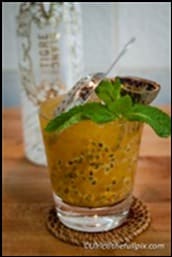
- 60ml Tigre Blanc vodka
- 3spoons Fresh passion fruits pulp
- 15ml La Fee Suisse
- 15ml Liquor 43
- Dash passion fruit syrup.
Muddle the absinthe, passion fruit & Tigre Blanc, float liquor 43 and garnish with a fresh mint sprig, flaming passion fruit.
While absinthe is infinitely complex and enjoyable, not all of them are a worthy investment. Considering the amount of fallacies & myth surrounding the category, many producers will –and have exploited- these misunderstandings and produce foul tasting liquids and passing them as absinthe!
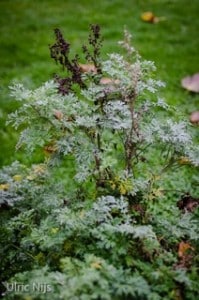
The excellent article by Gwydion Stone on the Wormwood society website does a very good job of explaining some of these misconceptions. The most common being the so-called “bohemian styled” absinth (note the lack of “e”): Bohemian absinths are compounded spirits which bear no resemblance to French or Swiss absinthes and that have been marketed since the 90’s. These products and the affiliated drinking rituals (sugar burning & absinth pipes) have helped propelled absinthe into a rite of passage rather than a drinking pleasure! Unnecessarily high in alcohol, with little or no natural ingredients used in their production, a drop of these will massacre any properly made cocktail and turn an innocent drinker into an absinthe-hating consumer. Avoid at all costs! To quote the article:
“As one consumer put it, this is a product “where ignorance is seen as a valued commodity amongst producers.”
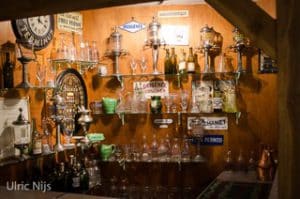

Lastly, no discussion about absinthe would be complete without a small reference to Marie Claude Delahaye, who has been pivotal in my transformation into an “asbintheur”. Marie Claude is the curator of the French absinthe museum and an expert of the topic. The small museum is situated in the town of Auvers-sur-Oise, only two hours away from Paris. It is a “must” for anyone who is interested in absinthe and its cultural impact on the French culture. Furthermore, considering that Ms. Delahaye has written no less than 25 books on topic, you are guaranteed to be in good hands! People expecting a big, commercial affair should abstain; it is a small & intimate museum patiently built over the years by someone who is clearly passionate about the topic. So passionate in fact, that it has been set-up in the same town where the Van Gogh brothers are buried. After all, isn’t Vincent, absinthe’s most notorious ambassador?
